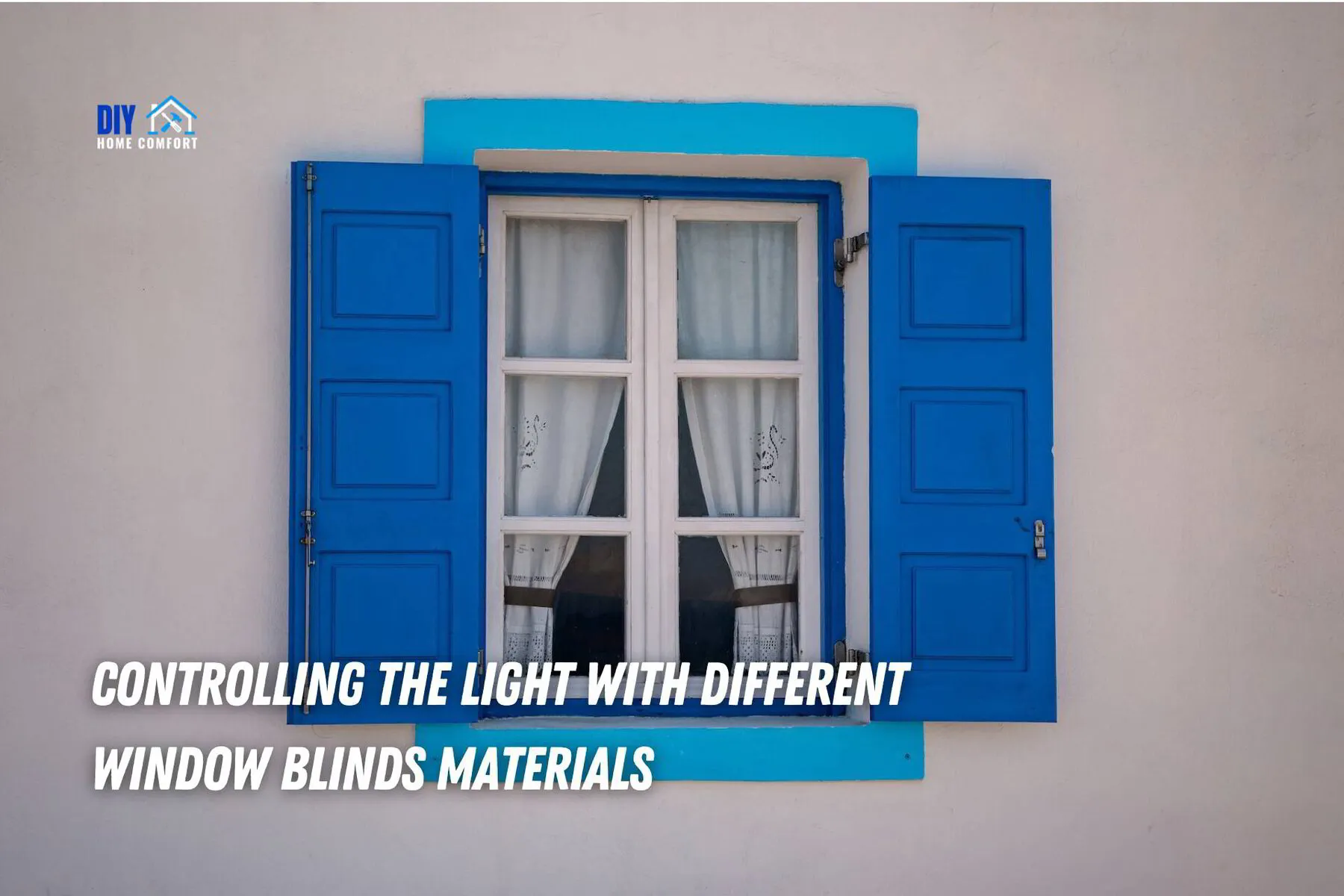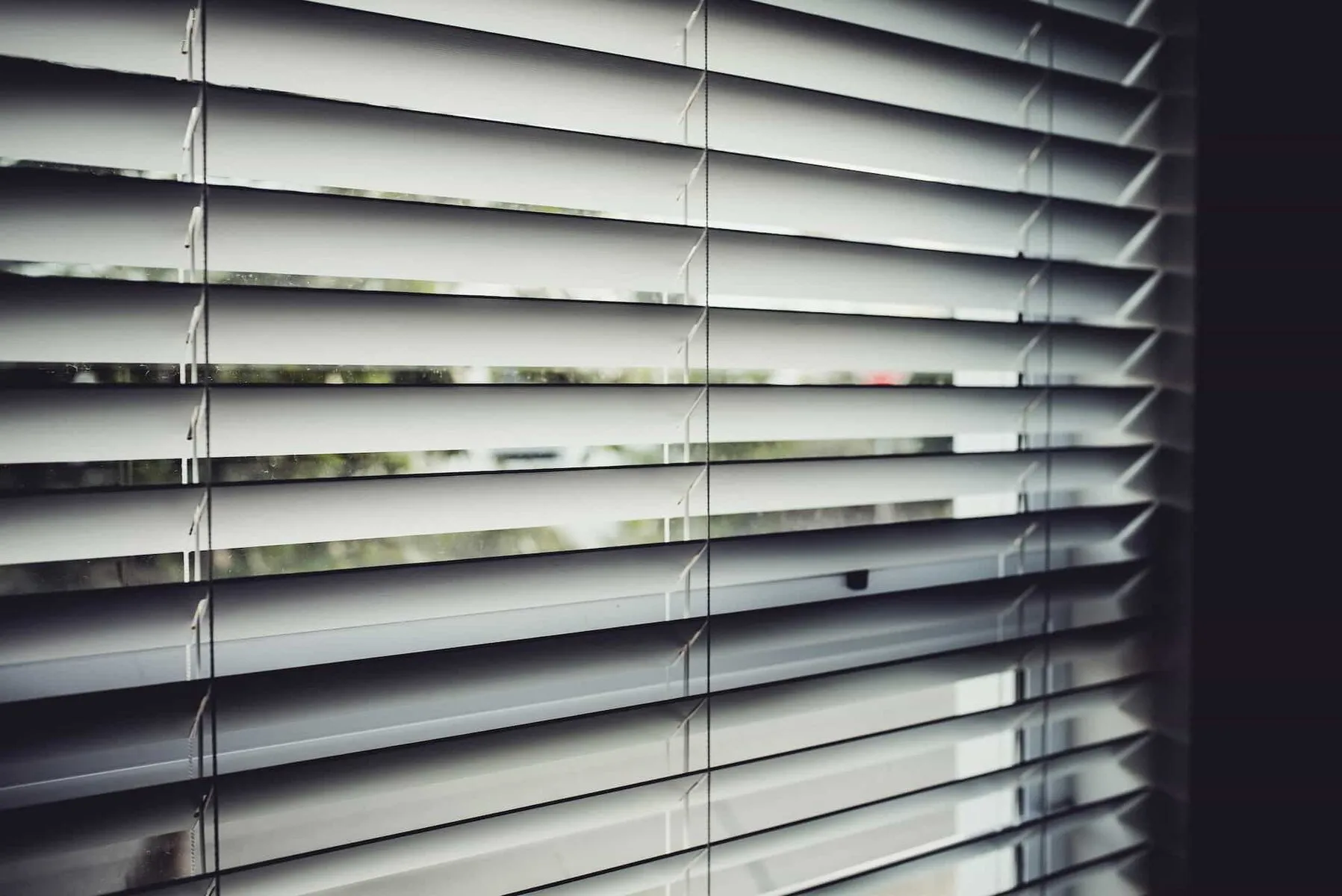Window blinds, often overlooked, play a critical role in controlling the amount of light that enters a space.
However, it's not just about their functionality; the material they're made of can dramatically influence their efficiency and aesthetics.
This document delves into the different materials used in window blind production and their impact on light control.
Whether designing, renovating, or simply curious, this guide will help you understand the importance of choosing the right material for your window blinds.
⭐ Types of Window Blinds' Materials
If you want to install window blinds, it’s best to get started by hiring professionals who can help you choose the right materials and install the blinds for you.
Here are the most popular types:
Wood
Wood blinds are a classic choice that never goes out of style. They offer an elegant and natural look that suits various interior styles.
However, their most significant advantage is their ability to block sunlight effectively.
The thickness and density of wood make it an excellent insulator, preventing heat from escaping or entering through the window.
But it's not all about functionality; wood blinds can add warmth and texture to a room, creating a cozy and inviting atmosphere.
Faux Wood
If you love the look of wood but have budget constraints, faux wood blinds are an excellent alternative.
Made from PVC or vinyl, they mimic the appearance of real wood while being more affordable and durable.
They're also moisture-resistant, ideal for kitchens, bathrooms, and other humid areas.
Aluminum
Aluminum blinds are a budget-friendly option that offers excellent light control.
They come in various sizes and can be customized to fit any window shape or size.
However, aluminum is a highly conductive material, which means it's less efficient in insulating against heat and cold than wood or faux wood.
Fabric
Fabric blinds are a great choice for a touch of elegance and softness.
Made from light-filtering materials, they allow light to enter the room while providing privacy.
They're also available in various colors and patterns, making them an excellent addition to any room's decor.
Cellular/ Honeycomb
If energy efficiency is your top priority, cellular or honeycomb blinds are your best bet.
The unique design of these blinds creates air pockets within the cells, acting as insulators to keep warm or cool air from escaping.
This makes them ideal for areas with extreme climates.
Solar
Solar shades are a popular choice for those seeking maximum light control.
Made from a mesh-like fabric, they block harsh sunlight while allowing you to see outside.
They also reduce glare and harmful UV rays, making them a practical choice for offices and homes with large windows.
⭐ Practical Benefits of Installing Window Blinds
Aside from controlling light, window blinds offer several other practical advantages.
These include:
- Privacy - Blinds can be easily adjusted to allow for natural light without sacrificing privacy.
- Energy efficiency - As discussed earlier, certain materials used in blinds production provide excellent insulation, reducing energy consumption and saving you money on heating and cooling costs.
- UV protection - Certain types of blinds can block out harmful UV rays, protecting your furniture from fading and your skin from sun damage.
- Noise reduction - Blinds can help reduce noise through windows, creating a quieter and more peaceful environment.
⭐ Ways to Control Light Using Window Blinds
Window blinds offer more than just an ON/OFF switch for light.
You can control the amount, direction, and quality of light entering a room with various adjustments and settings.
Here are some examples:
- Tilt controls - Blinds with adjustable slats allow for precise control over the angle of light entering the room.
- Blackout blinds - For complete darkness, blackout blinds are a perfect choice. They block all light, making them ideal for bedrooms or home theaters.
- Top-down/bottom-up - This feature allows you to adjust your blinds' top and bottom halves separately, giving you more versatility in controlling light and privacy levels.
⭐ Popular Trends in Window Blinds Materials
As with any other home decor element, window blind materials also follow trends.
Some popular ones include:
- Natural materials - With the growing interest in sustainable living and biophilic design, natural materials like bamboo and jute are becoming more popular.
- Motorized blinds - Motorized blinds that can be controlled with a remote or an app are gaining popularity for a touch of luxury and convenience.
- Bold colors and patterns - While white and neutral-colored blinds remain a classic choice, more people opt for colorful or patterned options to add personality and visual interest to their space.
⭐ Design Considerations for Choosing Blinds Materials
When deciding on the best material for your window blinds, there are a few factors to consider:
- Functionality - Consider how much light control and privacy you need in a particular room. For example, bathrooms may require moisture-resistant materials, while bedrooms may benefit from blackout blinds.
- Style - Your choice of material should complement your space's existing decor and style. For a modern and streamlined look, go for aluminum or fabric blinds. For a more traditional and luxurious feel, opt for wood or faux wood.
- Budget - Materials can vary greatly in price, so consider your budget when deciding on the type of material for your blinds.
⭐ Conclusion
Window blinds are an essential element in any home or office setting. They not only offer practical benefits but also add aesthetic value to a space.
With various materials and designs to choose from, you can easily find the perfect window blinds to control light and elevate the style of your environment.
So go ahead, explore your options, and decide on the best material for your window blinds!
Want to learn more about your home? Check out our other homeowner articles!
Scott Harding
Scott is the main author of DIY Home Comfort. He's also an experienced HVAC technician that enjoys home renovation and spending time with his family. You can find out more about him here.




